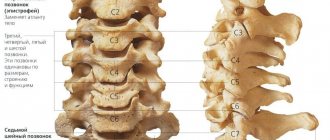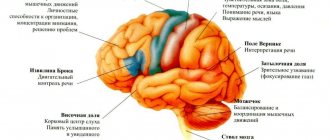Emotional burnout is directly related to work routine, regardless of profession and status. Both managers of large corporations and ordinary employees are susceptible to it. At the same time, the increase in the number of unemployed and the fear of losing a job also contribute to the emergence of symptoms of stress and burnout.
Burnout syndrome is characterized by a state of mental and emotional exhaustion, a feeling that “the batteries are low,” when a person is unable to recover in short periods of time. This syndrome is accompanied by a number of symptoms.
Free webinars on anti-aging medicine Learn about the features of the Anti-Age Expert International School, as well as the opportunities for improving your medical practice every day.
The webinar program also includes fascinating reviews of innovations in anti-aging medicine and analyzes of the most complex clinical cases with recommendations that really work. Find out more
Burnout has become a buzzword, so its true symptoms are often overlooked. If left untreated, burnout syndrome can lead to serious illnesses such as depression or medical illnesses.
Causes of burnout syndrome
It is generally accepted that teachers, as well as doctors and medical staff, are more susceptible to emotional burnout than others. However, even students, pensioners and housewives can suffer from it. After all, emotional exhaustion is not always associated with work; it can also be caused by too heavy a burden of personal obligations.
Let us conditionally divide the causes of this syndrome into personal and external.
- Personal causes of burnout.
Individual resilience and coping skills certainly play a role, but just because a person is very resilient to stress doesn't mean they're immune to burnout. It can affect both people who lack self-confidence and those who are confident, determined and full of energy.
Here are some of the internal reasons:
- overly ambitious and unrealistic goals;
- perfectionism;
- inability to say “no”;
- difficulty expressing feelings;
- Ignore your own needs and instead strive to meet the needs of others;
- poor adaptability;
- constant stress in your personal life;
- lack of rest;
- too high demands on yourself.
- External causes of burnout.
Both the workplace and society can exert significant pressure. Likewise, a difficult life episode or any other major change can lead to burnout.
Some of the possible external causes are:
- pressure at work (for example, the call to do everything faster);
- lack of incentive or overwork;
- lack of recognition and support;
- conflicts and bad atmosphere in the company;
- discrimination or intimidation;
- high competitive pressure;
- too many responsibilities;
- difficulty meeting deadlines;
- lack or absence of autonomy.
Burnout often occurs as a result of a clash of personal factors and external causes. Over time, all of these stresses weaken the immune system and are considered triggers for chronic fatigue syndrome (CFS).
Why can’t the psyche stand it?
Because it faces loads that altogether exceed its processing capacity. This can be compared to a fracture - the bone cannot withstand the force of a blow or fall. Or, if a person sits in an uncomfortable position for many years, then at some point the back begins to hurt, and after some time the consequences are the same as in the case of an acute injury. The psyche works thanks to the integrity of neural chains that ensure the stability of emotional reactions, and if these chains are destroyed under the influence of stress, then a person loses his usual internal supports.
That is, emotional burnout is the result of accumulated tension, which for a long time (several months, and sometimes a year) does not receive release in the form of a pause in work, communication with loved ones, or spiritual nourishment in the form of a hobby.
Symptoms of emotional burnout
According to the WHO, burnout is a work-related phenomenon and is not considered a disease. Burnout or professional exhaustion is a syndrome that is considered to be the result of chronic work stress that is not properly managed.
Symptoms of burnout syndrome develop over a long period. And even during weekends and vacations, as a rule, a person does not get better.
How does burnout manifest? Although it is not officially considered a disease, some of its symptoms are similar to those of depression.
Let's look at the most common ones:
- Emotional exhaustion. This is one of the main signs of burnout. A person suffers from an extreme lack of energy, it is difficult for him to start work and he feels exhausted. In general, the need for rest continues to grow, but a “burnt out” person is unable to fully rest. In addition, he feels increasingly depressed, believing that he cannot cope with his tasks and expectations.
- Reduced work efficiency. Emotional and physical exhaustion affects professional activities. Typically, productivity decreases gradually, concentration decreases, and errors become more frequent.
- Behavioral changes. One of the common symptoms of burnout is depersonalization, which manifests itself in some indifference and cynicism. Empathy and compassion for others, whether colleagues and clients, family and friends, are weakened. A burnt out person is too demanding of others and can even cause pain. As a result, his relationships with others may deteriorate sharply.
- Psychosomatic symptoms. Burnout can have physical consequences. Typical symptoms include:
- fatigue;
- headache;
- sleep disorders;
- back pain and muscle tension;
- cardiopalmus;
- high blood pressure;
- digestive problems (diarrhea, constipation and vomiting).
- Other symptoms of burnout. Its symptoms may be different in men and women. Here are some of the possibilities:
- feeling of lack of time;
- anxiety and nervousness;
- increased risk of accidents;
- apathy;
- feeling exploited;
- feeling of helplessness and despondency;
- feelings of worthlessness;
- decreased creativity;
- difficulty making decisions;
- depression, even depressive attacks;
- in some severe cases, suicidal thoughts.
Sexual dysfunction may also occur. And if a person consumes too much alcohol, caffeine or nicotine, it can lead to other physical problems. Some of these symptoms are common to other conditions, such as chronic fatigue syndrome.
Burnout is a multifactorial evil. In other words, people suffering from one of the symptoms are not necessarily experiencing burnout. On the other hand, if several of these signs appear at the same time, it may be time to be wary.
Online training in Anti-Age medicine Learn the intricacies of anti-aging medicine from anywhere in the world.
For the convenience of doctors, we have created the Anti-Age Expert online training platform: Lectures from our educational programs are consistently posted here, and are accessible 24/7. Doctors can study the materials as many times as necessary, ask questions and discuss interesting clinical cases with colleagues in special chats. Find out more
Emotional fatigue, how to overcome negative syndrome
To prevent a poor emotional state from becoming the cause of real physical illnesses, you need to try to start fighting it as early as possible. But this does not mean that you have to overcome your desires and do something through force. On the contrary, you need to focus attention on yourself, be in focus and analyze any, even not very good, actions or feelings. However, you should not judge yourself.
You should try to correct the situation as follows:
- Relax and not think about annoying moments at work. Forget about quarrels with your loved one, take up a hobby, meditation. Go on a tourist trip or go for a massage or go to the gym.
- Set aside at least one day a week for your needs. Have the opportunity to relax in such a way that no one disturbs or invades personal space.
- Try to ensure that any completed order or task is given a positive assessment. As a last resort, independently evaluate your work and reward yourself with valuable prizes. For example, buying your favorite ice cream or a new album from a popular rock band.
Having overcome emotional fatigue syndrome, you should not remember past thoughts and feelings. You need to keep moving forward, but with your head turned back, you won’t get far—you might stumble again.
Pathogenesis of emotional burnout
From an evolutionary and physiological perspective, humans are adapted to acute stress and respond to it with either flight or fight. This is the hereditary mechanism that has allowed the human species to survive.
The physiological response to stress occurs in three stages:
- Alarm phase.
It implements the hypothalamic-sympathetic-adrenergic axis, which involves the hypothalamus (a region of the brain), the sympathetic nervous system (or activator) and the medullo-adrenal glands.
The sense organs (vision, hearing, smell, touch) perceive the stress factor and transmit information to the limbic system of the brain. The hypothalamus, a specific area of the brain, receives this information and triggers a range of responses that facilitate flight or fight. The first reaction is immediate and follows the path of the autonomic nervous system: it occurs automatically, not consciously.
The so-called sympathetic nervous system, a component of the autonomic nervous system, produces norepinephrine and activates the adrenal medulla (the central parts of the adrenal glands, the glands located above the kidneys), which in turn produce epinephrine and norepinephrine.
These two substances, called catecholamines, increase heart rate, pulmonary ventilation, alertness, sensory acuity (pupil dilation), and blood sugar levels. The muscles tense, and so do the smooth muscle cells of the artery walls, hence the increase in blood pressure.
The whole body is ready to fight or flee almost immediately. Everyone is familiar with the expression “adrenaline rush” and the sensations associated with it.
In addition, norepinephrine activates two other areas of the brain: the amygdala and hippocampus. The amygdala analyzes and evaluates the severity of a situation compared to past experiences. The hippocampus is responsible for remembering experienced events and recording new information.
- Resistance phase.
It concerns the hypothalamic-pituitary-adrenal axis or corticotropic axis, in which the hypothalamus, pituitary gland and cortico-adrenal glands intervene.
If the stressor persists, the hypothalamus activates the pituitary gland by producing corticotropin-releasing hormone or corticoliberin. The pituitary gland, in turn, activates the adrenal cortex, which produces cortisol, also called hydrocortisone.
Cortisol is used to release energy from fats and carbohydrates to keep muscles working. In addition, cortisol, like the drug cortisone, has an anti-inflammatory effect: a person can run very fast or get injured, but does not feel pain at this moment.
Cortisol also tends to travel into the brain and activate the hippocampus, an area of the brain involved in memory and learning. In a physiological situation, the hippocampus slows down the hypothalamus. This is negative feedback control of the stress response.
During the resistance phase, the corticotropic axis remains active, with corticotropic hormone and cortisol levels increasing and remaining high. This phenomenon is called the burning phase.
Corticoliberin has a depressive and anxiety-producing effect, which explains the symptoms of people in a state of chronic stress: depression, anxiety.
Elevated cortisol levels are toxic to the hippocampus, which gradually loses its ability to slow down the hypothalamus and the ability to remember events. This explains the deterioration of immediate memory and learning ability.
In addition, levels of certain neurotransmitters fall in the central nervous system (brain and spinal cord). For example, dopamine (“the hormone of happiness”), associated with attention, initiative, pleasure, and serotonin (“the hormone of well-being”), associated with a feeling of completeness and satisfaction.
- Exhaustion phase.
Under conditions of chronic occupational stress, modern man can neither run nor fight most of the time. He experiences repeated stress, sometimes for long periods of time.
When the burn-out state persists, the adrenal cortex becomes exhausted and cortisol production drops. Hypotension may be a sign of adrenal fatigue.
There comes a point when a person no longer has energy. He is in a situation of physical, mental and emotional exhaustion. He is depressed, deficient in dopamine and serotonin. This phenomenon is called the burnout phase.
The person becomes susceptible to infections. In people with burnout, there is a decrease in the activity of some immune defense cells, natural killer cells, and a decrease in the CD4 + / CD8 + ratio. CD4+ T cells are lymphocytes (white blood cells) that enhance the immune response.
CD8 are suppressor or cytotoxic lymphocytes: they are able to prevent certain reactions and kill abnormal cells. The normal ratio is 2:1. A decreased CD4+/CD8+ ratio suggests abnormal functioning of the immune system with possible immunodeficiency.
Burnout is associated with increased levels of proinflammatory cytokines, chemical mediators of inflammation, and reactive C protein, another marker of inflammation.
VEGF (Vascular Endothelial Growth Factor) increases blood circulation in people with burnout. VEGF causes the formation of new blood vessels (which is unfavorable in cancer) and increases microvascular permeability.
Conversely, the protein BDNF (brain-derived neurotrophic factor) reduces circulating levels. BDNF promotes the survival of existing neurons and the formation of new ones. It is present in the central and peripheral nervous system, with prominent activity in the hippocampus and cerebral cortex. Decreased BDNF levels suggest a decrease in the brain's ability to maintain and repair itself.
How the process develops:
1. At the moment when euphoria appears in the form of “dizziness from success” in work (the project was a success, brought good profits, etc.), a person often strives to work more so that next time it will turn out even better. Sometimes to the detriment of personal life, friendship, and recreation. After all, they do not bring profit and the pleasure from them is too ordinary. The first stage of burnout is also called “falling in love” or “honeymoon”; a person is so passionate about a new job, “fired up” with a new idea, that he cannot think about anything else, talks only about this, puts his whole soul into a new project. During this period, the immune system is mobilized, the person practically does not get sick, and there is a feeling of flight “not walking, but soaring above the ground.”
2. At the second stage, which is called “working” or “lack of fuel,” a person continues to work hard, but he already begins to feel tired, increased fatigue, but for now additional rest helps eliminate it. In the absence of additional motivation and stimulation, the employee’s interest in work begins to decrease. But at the second stage, a person can quickly get himself into a working state, for example, by drinking a cup of strong coffee or tea.
- the muting of emotions begins, the severity of feelings and freshness of experiences is smoothed out;
- the specialist suddenly notices: everything seems to be fine so far, but... it’s boring and empty at heart;
- misunderstandings arise with clients (students, patients), a professional among his colleagues begins to talk about some of them with disdain.
- friends and family are offended that you suddenly began to pay less attention to them.
3. At the third stage of emotional burnout, which is called “exhaustion,” gradual emotional burnout actually occurs if preventive measures are not taken urgently. The person continues to work hard, but now the work no longer brings joy (the enthusiasm that was at the first stage gradually disappears). A person does everything more slowly; the same work takes much more time than at the first stage. Accumulated fatigue dulls emotions, and it becomes almost impossible to get yourself into a working state, for example, with the help of strong coffee or tea. The body requires rest, but even weekends (vacations) are not able to bring a person into working condition, and a feeling of chronic fatigue appears. At the third stage:
- mood deteriorates - a person feels irritable (and this irritation exceeds the reason that caused it) and it becomes more difficult for him to restrain negative feelings when communicating with people, conflict increases;
- positive emotions disappear, some detachment appears in relationships with family members;
- the range of emotional sensations narrows (the so-called flattening of affect), when nothing brings joy or pleasure. As with anesthesia: brightness is lost, emotional dullness is noted;
- hostility begins to gradually manifest itself in the presence of clients (students, patients) - at first it is barely restrained antipathy, and then outbursts of irritation. Such behavior of a professional is an unconscious manifestation of a sense of self-preservation during communication that exceeds a level that is safe for the body;
- out of habit, such a person may still retain external respectability and some aplomb, but his eyes lose the sparkle of interest in anything, and an almost physically tangible coldness of indifference settles in his soul;
- optimism and the desire to make long-term plans disappear;
- ideas about the values of life become dulled, the emotional attitude to the world “flattens”, a person becomes dangerously indifferent to everything, even to his own life;
- relationships with loved ones are deteriorating, and these are not just quarrels, but deep emotional alienation, and, as a result, the space for restoring mental strength is limited. After all, when you were busy with work, you did not feel that you were moving away from your loved ones, and now you have become “distant” for them;
- a state of anxiety and dissatisfaction arises; returning home, more and more often I want to say: “Don’t bother me, leave me alone!”;
- it seems to a person that he is underestimated, he has put his “whole soul” into his work, but does not feel any response, it seems to him that no one notices all his achievements at work, conflicts with colleagues are possible, envy and a sense of rivalry may appear in relation to the successful colleagues. All successes of colleagues are perceived negatively by “upstarts,” and conflicts with management are possible. Thoughts appear: “Isn’t it time to change jobs?” your legs “don’t go to work.” The legs seem to become weak, the former lightness of gait, which was in the first stage, gradually disappears.
- at the third stage, the imbalance between give and take is very acutely felt. In order to maintain both physical and psycho-emotional health, this balance should not be disturbed. How much physical and emotional strength a person puts into work, the same amount should be received back:
- in the form of relaxation , where there are no thoughts about work, but there is a favorite hobby, or some favorite activity: yoga, meditation, massage, gym, bathhouse, meeting with friends, even a computer game, the main thing is that a person can completely relax and take your mind off thoughts about work. Do not forget that with prolonged stress, the muscles are constantly tense and the body needs relaxation to maintain health. One day a week should be completely devoted to yourself (there should be a personal space where you feel comfortable both physically and emotionally);
- in the form of a positive assessment of your work - praise, admiration, just words of support. If you can’t wait for words of support from your colleagues, forget about pride and ask management directly “did they like the way you implemented the latest project, are they satisfied with your work in general.” Remember how a cat behaves when it wants to be petted; it will not leave a person until it receives its portion of positive emotions. Learn from the cat! Believe me, it’s better to ask for a compliment than to live for months with the feeling that you are underestimated, and no one notices your efforts, because you didn’t just work for a salary, but put your whole soul into your work, and you should know how this work is assessed from the outside other. At the same time, do not forget to praise yourself for every small step forward: “I did it! I'm done! I managed! I’m super!!!”, it’s not for nothing that they say: “If you don’t praise yourself, no one will praise you!” You can give yourself a gift, for example, in the form of shopping, a trip to a beauty salon, a trip to nature, to the sea - the main thing is that the emotional response is equal to the emotional effort spent, then the balance between “give and take” can be maintained and emotional burnout will not occur and you can return to the second or even the first stage.
4. If a person at the third stage does not take any preventive measures, the fourth stage of burnout occurs, which is called “crisis” or “devastation”, when stress accumulated over a long period of time manifests itself at the body level - bodily symptoms appear - insomnia, loss of appetite, problems with the heart or stomach, the immune system becomes so weakened that the person constantly feels various ailments. Not only health problems are possible, but also long-term, protracted depression. Often at this stage there is a breakdown in relationships with loved ones, divorce. At the same time, on an emotional level, worries about work become less. Work becomes easier, but any work is done as if mechanically, without a soul, since a person at this stage is already “emotionally burnt out.” A person simply sits at work for the allotted time, strives to leave early if possible, and take sick leave. At the fourth stage, a person does not receive any satisfaction from work, goes to work as if it were hard labor, does not agree to stay even a minute after work (although at the first stage he easily stayed for hours, and even took work home). Here the proverb comes to mind: “From love to hate there is one step” and this step has been taken... There is a desire to urgently change jobs, or better yet “retire” right away. At the fourth stage, a person is not able to show sympathy and understanding towards people, he can only emit these feelings, a feeling of cynicism appears. A person feels a sense of neglect towards clients; at this stage it seems to a specialist that the client himself is to blame for all his problems, and he certainly deserves them. In essence, a person in the helping profession at the fourth stage becomes professionally unsuitable. And then the circle is closed: if you don’t maintain relationships for a long time (with your wife, children, friends, yourself outside of work), they don’t develop. A person is deprived of any space in which he feels comfortable and safe, except for work. But now it is work that becomes the source of negativity: the more work, the deeper and more extensive the devastation.
Stages of emotional burnout
This syndrome has several classifications. Let's consider one of them, which distinguishes 5 main stages.
- Honeymoon phase.
It is characterized by not knowing that something is wrong. At this stage, it is only some dissatisfaction or concern that does not raise suspicions.
The honeymoon phase often happens when we change jobs or take on new challenges in an old workplace. At this moment, we are still full of energy and optimism and feel the need to show our best side.
The most common symptoms of burnout in the early stages are:
- Desire to readily take on responsibility;
- Sustainable energy levels;
- Feeling that something is wrong, but ignoring it;
- The desire to prove yourself and go beyond your own capabilities;
- A state of constant vigilance;
- Increased energy, as if you are on an adrenaline rush.
- The onset of stress.
The second stage of burnout occurs with more obvious symptoms. This usually starts with recognizing that some days are harder than others. During these difficult days, employees typically find it difficult to concentrate, stay awake, feel sluggish, and worry about unfinished work. All of this begins to take a toll on their emotional and physical well-being, which only gets worse over time.
Here are some of the most common symptoms of stage 2 burnout:
- Anxiety;
- Problems with decision making;
- Change in appetite;
- Fatigue;
- Forgetfulness;
- Rapid heartbeat and headaches;
- Lack of sleep;
- Irritability;
- Problems with focusing.
- Chronic stress.
If you are constantly in nervous tension, you gradually move into the stage of chronic stress. It impairs the ability to concentrate, which seriously reduces productivity and performance. In turn, you will begin to feel powerless and unworthy, losing control of everything you do. You will also feel pressured by daily tasks to the point where you will feel like you need to run away from your responsibilities. All of this can lead to feelings of incompetence.
Chronic stress can take a huge toll on mental and physical well-being as it deepens and intensifies the symptoms listed in stage two. However, unlike the second stage, you will not be able to manage your emotions as well, which can lead to sadness, resentment and aggressiveness.
Some of the symptoms of the chronic stress phase are:
- Anger or aggressive behavior;
- Apathy;
- Exhaustion;
- Decreased sexual desire;
- Increased alcohol/drug consumption;
- Increased caffeine consumption;
- Physical illness;
- Touchiness;
- Social isolation.
- Burnout.
It occurs when all these symptoms become too frequent and even considered a normal part of life. However, these signs, if present over a long period, lead to physical and mental problems that impair our quality of life.
Some of the most common symptoms of the burnout stage include:
- Feeling empty;
- Pessimistic outlook on work and life;
- Physical symptoms worsen;
- Diffidence;
- Complete disregard for personal needs;
- Wanting to leave work or friends/family;
- Habitual burnout.
This is the last of the five stages and occurs when burnout becomes a part of life and all attempts to recover from the situation fail. Habitual burnout affects your career, your relationships, your health—every aspect of your life. Habitual burnout usually requires medical attention because it can be difficult to deal with alone.
Some of the common symptoms of habitual burnout include:
- Chronic sadness;
- Depression;
- Chronic physical and mental fatigue.
What to do if you notice signs of burnout?
First of all, acknowledge that they exist. It is difficult to admit to yourself: “I am suffering from professional burnout.” Moreover, in difficult life situations, internal unconscious defense mechanisms are activated. Among them are rationalization, repression of traumatic events, “petrification” of feelings and body.
People often evaluate these manifestations incorrectly - as a sign of their own “strength”. Some protect themselves from their own difficult conditions and problems by becoming active: they try not to think about them and devote themselves completely to work and helping other people. Helping others can actually bring relief for a while. However, only for a while. After all, overactivity is harmful if it distracts attention from the help you need yourself.
Remember: blocking your feelings and being too active can slow down your recovery process.
Anti-stress techniques:
1. Get distracted:
- A five-minute walk in nature can bring many benefits.
- try to switch your thoughts to another subject.
- Look around and take a closer look.
- Pay attention to the smallest details.
- Slowly, without rushing, mentally “go through” all the objects one by one in a certain sequence. Mentally say to yourself: “Brown desk, green curtains, etc.”
2. Reduce the significance of events:
- It should be remembered that the true cause of stress is not people, not disappointments, not mistakes, but how you feel about it.
- Use the principle of positivity in everything with attitudes such as: “I didn’t really want to,” “this is not the main thing in life, you shouldn’t treat what happened as a disaster,” etc.;
- “there’s no need to beat yourself up”, “stop being dramatic”;
- He who worries earlier than he should worry worries more than he should.
3. Take action:
- any activity, especially physical labor, acts as a lightning rod in a stressful situation;
- Stress is a very powerful source of energy. You can unwind in the simplest way: clean up your home or workplace;
- take a walk or brisk walk;
- go for a run;
- hit a ball or pillow, etc.
4. Create:
Any creative work can heal from experiences:
- draw;
- dance;
- sing;
- sculpt;
- sew;
- design, etc.
5. Express emotions:
Pushing emotions inside, trying to hide them, is very harmful!
Learn to show emotions, “throw them out” without harm to others.
Emotional release is necessary to maintain health (physical and mental),
The ability to talk about your problems will help you establish contacts with others and understand yourself.
- depict emotions using gestures, facial expressions, and voice;
- crumple, tear paper;
- throw objects at the target on the wall;
- try to draw your feeling, then color it, make it funny or tear it up;
- talk to someone, emphasizing your feelings (“I’m upset..”, “I’m offended by this..”).
6. Reframing (The word 'reframing' comes from the English word 'frame' (frame), so it can literally be translated as reframing. Changing the point of view, attitude towards something, without changing the situation itself):
Make it a rule to reframe at least three times:
- Whenever something negative happens, try to find three positive consequences or wins that can be derived from this trouble.
7. Visualization of the resource state:
A group of methods aimed at developing the ability to manage one’s condition.
A person, in a state of deep relaxation, evokes any pleasant memory: place, time, sounds and smells, gets used to this state, remembers it and trains the ability to recall it at will.
This state is called a resource state, and having learned to quickly evoke it, one can turn on this state in difficult moments.
8. Kinesiological set of exercises:
One palm is placed on the back of the head, the other on the forehead. You can close your eyes and think about any negative situation that is relevant to you. Take a deep breath and exhale. Mentally imagine the situation again, but only in a positive aspect, think about and realize how this problem could be resolved. After the manifestation of a kind of “pulsation” between the occipital and frontal parts, self-correction ends with inhalation and exhalation.
Relaxation (when we accumulate energy) includes the following:
- Sleep (7-9 hours)
- Trance (meditation)
- Breathing exercises
- Energy gymnastics (strangely enough, this is relaxation – and at the level of the internal environment)
- Prayer
- Being in the temple
- Solitude (solitude greatly restores strength!)
- Color visualization
- Leisurely walk
- Swimming
- Drinking water
- Listening to classical music (and organ music is especially valuable in this sense)
- Aromas (smells of forest, sea, field, essential oils)
- Massage
- Acupressure
- We accumulate energy when we sincerely admire someone!
- And of course, forgiveness - from it the return of energy wasted on offense comes in double volume (and if you have at least once managed to sincerely forgive someone, you know this well)
- And gratitude.
Your condition can be alleviated by physical and emotional support from other people. Don't give up on it. Discuss your situation with others who have had similar experiences and are feeling good.
- DO NOT hide your feelings. Show your emotions and let your friends discuss them with you.
- DO NOT avoid talking about what happened. Take every opportunity to review your experiences alone or with others.
- DO NOT let your feelings of embarrassment stop you when others give you a chance to speak or offer to help.
- DO NOT expect the severe symptoms of burnout to go away on their own. If you don't take action, they will visit you for a long time.
- Allocate enough time for sleep, rest, and reflection.
- Express your desires directly, clearly and honestly, talk about them to family, friends and at work.
- Try to maintain a normal routine in your life as much as possible.
Methods of helping with emotional burnout:
1. Physiological (effects on the body): sunlight, physical exercise, sunbathing (tanning), fresh air, air baths, walks, bathing, swimming in reservoirs, baths (Russian, Finnish), solarium, infrared radiation, breathing Strelnikova, breathing exercises.
2. Physiotherapeutic: physiotherapy, electrosleep, acupuncture, acupuncture of all schools, massage, homeopathy.
3. Biochemical (effects at the cellular level): healthy food, medications.
4. Psychological: auto-training, meditation, biofeedback method, self-regulation methods, music, prayer.
If you understand that combustion is already happening and has reached deep stages, remember: special work is needed to respond to the traumatic experience and revive feelings. Real courage is admitting that I need professional help.
First comes the difficult work, the goal of which is to “remove the shell of insensibility” and give permission to your feelings to come out. This does not lead to a loss of self-control, but suppressing these feelings can lead to neuroses and physical problems. At the same time, special work with destructive “poisonous” feelings (in particular, aggressive ones) is important. The result of this preparatory work is the “clearing” of the internal space, freeing up space for the arrival of something new, a revival of feelings.
The next stage of professional work is a revision of your life myths, goals and values, your ideas and attitudes towards yourself, other people and your work. Here it is important to accept and strengthen your “I”, to realize the value of your life; take responsibility for your life and health and take a professional position in your work.
And only after this, step by step, attitudes towards other people and ways of interacting with them change. There is a new development of one’s professional role and one’s other life roles and behavior patterns. A person gains confidence in his abilities. This means that he has come out of the emotional burnout syndrome and is ready to live and work successfully.
Psychologists believe: in order not to become a victim of the syndrome, you must, first of all, have the right attitude towards yourself, other people and your work.
The main thing is to remember: burnout syndrome is not a disease or a death sentence, it is just the ability of your psyche to respond to emotional overload.
Prepared by: educational psychologist Konon Svetlana Nikolaevna
Consequences of emotional burnout
Ignoring burnout can have serious consequences. They can be like this:
- Chronic fatigue;
- Insomnia;
- Alcohol or substance abuse;
- Heart disease;
- High blood pressure;
- Diabetes mellitus type 2;
- Vulnerability to disease.
Therefore, it is so important to diagnose this syndrome in time and try to correct it as soon as possible.
“Emotional burnout can lead to quite serious consequences. It's not just weight changes or sleep disturbances. A whole cascade of pathological reactions in the body is launched.
The menstrual cycle is disrupted, ovulation disappears, which can lead to infertility, PMS develops, and many develop benign tumor-like diseases - fibroids, cysts, mastopathy, endometriosis. Some women begin to bleed, while others may miss their periods. Memory and concentration decrease significantly, it becomes difficult to work, study, and absorb new information. The nervous system cannot adapt to what is happening and fails. For some, this can result in neurosis or aggression, for others - in depression. Depletion of the entire endocrine and immune system leads to the development of a variety of diseases against this background - from systemic to oncological. And it is very important to stop this process in time.”
Lyudmila Vladimirovna Mudragel
obstetrician-gynecologist, gynecologist-endocrinologist, ultrasound diagnostics doctor, specialist in aesthetic gynecology, doctor of integrative and anti-aging therapy
Experience: 23 years
Parent Resources
There are external resources, and there are internal ones.
External means connecting other people. Internal ones are those resources for which you don’t need anyone, you implement them yourself (and if not, a psychologist will help). External:
- Organization of assistance. For example, nannies or babysitters.
- Organization of regular productive communication, energy exchange with the world. This is especially necessary for extroverted women.
- Development of marital relationships.
- Group physical activity. Going to a fitness club, communicating with a group of active people with whom there is positive communication.
- Group creative activity - dancing, courses, etc.
- Organized parent education. A group, perhaps even in an online format, in which you learn parenting.
Internal:
- Overcoming self-evaluative attitudes. If we are very critical, it takes away our resource.
- Overcoming anxiety and guilt.
- Overcoming a utilitarian attitude towards oneself. Sometimes parents perceive their functions as an inanimate instrument: “I am a saucepan - I must cook!”
- Increasing parental competence. A very powerful parent resource. Read books on pedagogy and improve your parenting skills - this will help you reach a qualitatively different level of parenting.
- Improving the organization of work, sleep and rest. Proper planning of the day to restore the resource.
- Working with your own childhood psychological traumas. Here, too, communication with a psychologist will most likely help.
It is important not to feel enslaved by your child. Otherwise, parenting becomes a lot like going to college that you didn't really want to go to. You can always find something that interests you in parenting!
Diagnosis of emotional burnout
Burnout is quite difficult to diagnose because it has no specific physical symptoms. However, its treatment is more effective when it begins after the first signs appear, which we described above.
You can seek help from a psychotherapist or an anti-aging doctor. The doctor will collect a family history, analyze working conditions and offer testing.
For this purpose, for example, there is the Maslach Burnout Inventory (MBI), which is used to assess the degree of emotional burnout and consists of 22 questions.
There are other questionnaires of the same focus: the Oldenburg Professional Burnout Questionnaire, the Copenhagen List, the Shirom-Melamed burnout indicator model and others. However, none of these tools provide a diagnosis that needs to be supplemented by clinical examination.
You will likely need to undergo laboratory tests to rule out underlying inflammation, infection or allergies, and analyze your eating habits to suggest any nutritional deficiencies.
“For a long time, we write everything off as fatigue or a difficult period in life. And only when problems arise at work, relationships in the family or with a partner deteriorate, or depression sets in, the question arises, where to go for help?
Since burnout leads to significant changes in hormonal levels, menstrual irregularities, decreased libido, weight changes, sleep disturbances, and the development of anxiety, such women turn to a neurologist, an endocrinologist, or a gynecologist for medical help.
But more often than not, the correct diagnosis is not made, and they do not receive effective therapy. That is why it is important to work with an integrative doctor who can understand the cause of what is happening and comprehensively influence the body, restoring all damaged links in this chain. Only an integrated approach to the treatment of such conditions can be successful.”
Lyudmila Vladimirovna Mudragel
obstetrician-gynecologist, gynecologist-endocrinologist, ultrasound diagnostics doctor, specialist in aesthetic gynecology, doctor of integrative and anti-aging therapy
Experience: 23 years
How to make a diagnosis
A diagnosis of CFS can be made if the following criteria are met. The presence of 2 major signs is required. This is constant fatigue with decreased activity during the day, lasting more than 6 months. However, it does not go away even after proper rest, and can intensify.
The second main criterion is the absence of somatic and mental illnesses. For this purpose, the patient is referred for examinations and consultations with specialized specialists: a cardiologist, gastroenterologist, neurologist, etc. The impact of the psychotraumatic factor is taken into account.
Having these 2 points is not enough. The presence of 6–8 other (minor) symptoms of the disease is also necessary.
With proper and timely treatment, complete recovery occurs. But there is a possibility of relapse under favorable conditions, for example, when exposed to stress factors or after an illness. In rare cases, the syndrome leads to serious consequences.
Treatment of emotional burnout
Treatment depends on the cause and must be individualized for each patient. Self-medication with sleeping pills is strictly not recommended, as it can lead to drug dependence.
If burnout is work-related, the doctor may recommend taking a vacation, as well as the following steps to correct the syndrome:
- Psychotherapy. Cognitive behavioral therapy involves gradually exposing the patient to anxiety-provoking situations and helping them change their behavioral responses.
- Medicines. In some cases, antidepressants (serotonin reuptake inhibitors) may be prescribed. Dopamine and norepinephrine reuptake inhibitors are sometimes combined. These substances aim to increase the concentration of these neurotransmitters in the intersynaptic spaces, the connection points between neurons.
There are also natural treatments for burnout:
- Relaxation techniques. They reduce stress and improve heart function, even if you spend just a few minutes a day.
- Hypnosis. It allows a person to mobilize their own resources to cope with burnout.
- Yoga and tai chi. Their practice is associated with an increase in BDNF, a neuronal building factor and plasticity. Therefore, practicing yoga or tai chi can prevent burnout or improve the well-being of a person with this syndrome.
- Changing your diet. In particular, a diet rich in magnesium may be recommended - its deficiency is involved in numerous mechanisms associated with stress and burnout. Taking magnesium helps prevent and recover from burnout.
At the same time, some products reduce the absorption of magnesium and increase its excretion in the urine:
- caffeine found in coffee, some carbonated drinks and energy drinks;
- excess phosphorus (dairy products, soft drinks enriched with phosphoric acid);
- alcohol.
Foods rich in magnesium include seafood, sardines, Brazil nuts, nuts, hazelnuts, almonds, green leafy vegetables, buckwheat, legumes.
Other methods for correcting burnout syndrome include homeopathy and herbal medicine.
Anti-Aging Medicine Seminars Gain knowledge based on evidence-based medicine first-hand from the world's leading experts. As part of the Anti-Age Expert Modular School, in-person two-day seminars are held every month, where the intricacies of anti-age medicine are revealed to doctors of more than 25 specialties
Find out more
Prevention of SEV in parenting
Remember: it is better to carry out prevention before the child is conceived, and not after he is already born.
There is an approach when parenthood becomes a way of a person’s self-realization. After all, this is quite a creative activity! And you don’t even have to set your sights on parenting as a whole, but choose one area and be a professional in it. It is important not to feel enslaved by your child. Otherwise, parenting becomes a lot like going to college that you didn't really want to go to. You can always find something that interests you in parenting! And remember that self-realization in another area gives energy for parenthood. At work you take a break from your family, and at home you take a break from work. Several areas of life give us the resource to accomplish different things. If you can't find anything to be excited about about parenting, maybe it's time to take some parenting classes and see what else is behind it. And, of course, a support group is important - a husband, other parents with children, friends, some kind of community, which, by the way, you can create yourself.
Brief conclusions
- Emotional burnout is directly related to work routine or heavy personal obligations.
- It is not officially considered a disease, but the condition is accompanied by many different symptoms.
- The stages of emotional burnout are conventionally divided into 5 stages.
- Burnout can lead to serious health consequences if not diagnosed early.
- For successful correction of the syndrome, it is recommended to contact doctors of integrative anti-aging medicine.










